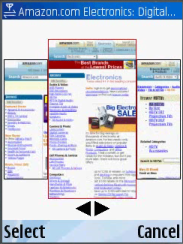
The argument goes as follows: phones are becoming more capable all the time and already some high end phones can handle existing desktop-focused sites without a problem. So why is a mobile-friendly site necessary?
This true up to a point—some of the more recent Nokia smart phones (e.g. the Nokia N90 and N70 series) are being shipped with the Web Kit browser that can render normal desktop sites such as Amazon without any problems. However, there are 4 major problems with this approach:
- These advanced phones represent a tiny percentage of the phones in use around the world. We should concern ourselves more with the 2.5 billion other “normal” phones. These abilities will likely trickle down to other phones, but this will take a long time.
- Phones will always be less capable than PCs due to the physical size limitations. You simply can’t fit a big screen and keyboard in a small phone. There will always be a capabilities gap, regardless of how good the phones get.
- Just because you can visit a PC site on a phone, it doesn’t mean you necessarily want to. Mobile is different. Mobile browsing is much less about random surfing than it is about targetted, time & location-specific tasks. Experience has shown that you can’t simply miniaturize a site for mobile—to be truely mobile-friendly and useful, a site needs to be designed for mobile, not just squeezed into a smaller space. Some people argue that mobile should be considered another channel entirely, and that it is a mistake to think about it in the same way.
- Viewing a PC site on a phone can be very expensive because of all the graphics that need to be downloaded. The cost alone is enough to make this unfeasible for many users. Example: the cnn.com homepage would cost as much as €7 to view on a phone based on some data plans in Europe.
To summarize, the advanced browsing capabilities of more recent phones are very nice to have, but do not really solve the core problems with mobile browsing.






